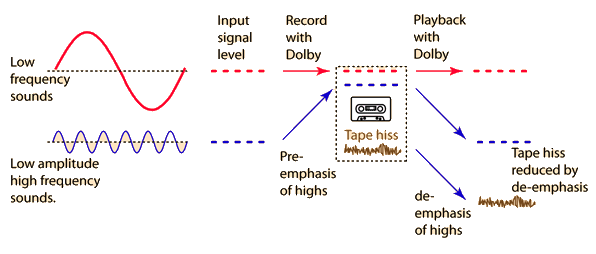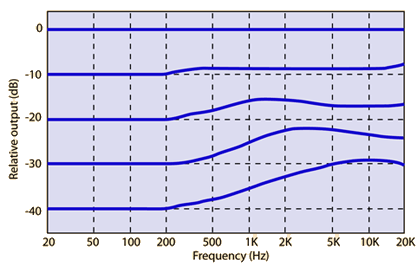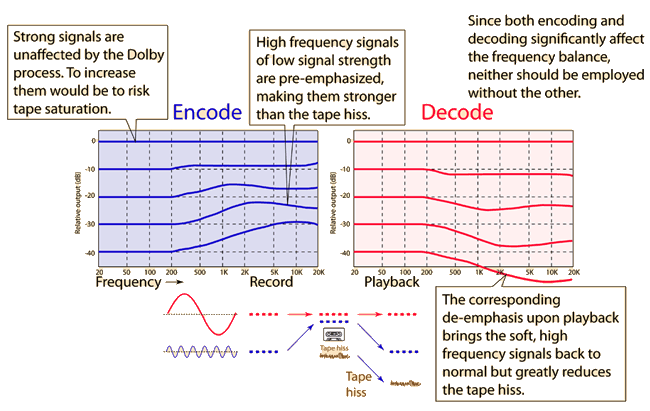Dolby Noise Reduction
The Dolby systems for noise reduction employ circuitry which pre-emphasizes high frequencies before they are recorded onto tape in order to make them larger than the tape hiss noise with which they compete.

The circuitry is amplitude-sensitive: only soft high-frequency sounds are emphasized. If loud high-frequency sounds were emphasized, it might drive the tape into its distortion levels. Upon playback, a matched de-emphasis circuit is employed to restore the high frequencies to their proper balance with the other part of the recorded signal.
| Dolby-B encoding curves |
Sound reproduction concepts
Tape recording concepts
| HyperPhysics***** Sound | R Nave |

